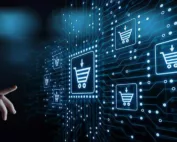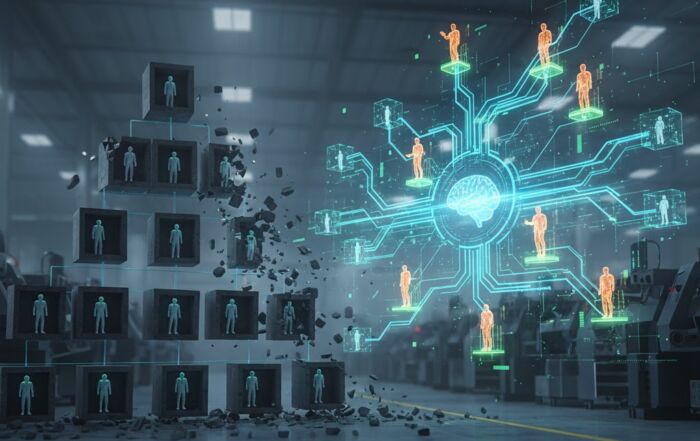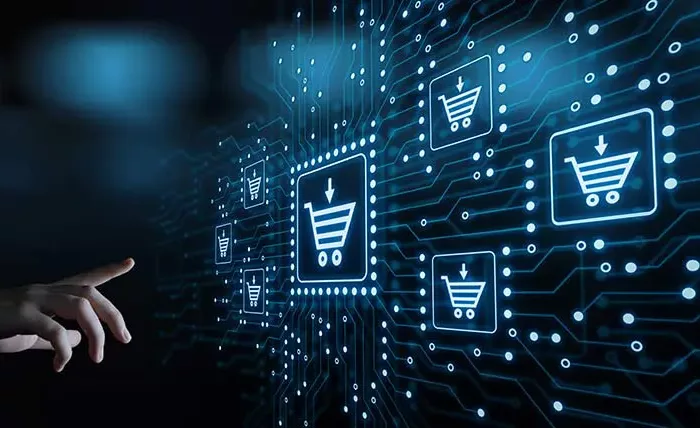Share
Author
George Anderson
Share
It’s no secret that B2B buying processes are changing fast. Purchasing agents were demanding Amazon-style experiences before the pandemic, but COVID has accelerated this trend.
We’ve spoken with many organizations that weren’t equipped for this shift. Here are 4 challenges that manufacturers face as expectations keep evolving.
1. Dealers and distributors want self-service more than ever
In a 2017 study of 1,000 B2B buyers, McKinsey & Co. asked respondents how they preferred to reorder products. Not surprisingly, 86% chose self-service options over talking to sales. And this was before COVID.
McKinsey conducted a different study at the height of the pandemic. This time around, they found that 99% of B2B buyers were comfortable with end-to-end, online self-service—even for purchases of $50,000 or more.
These studies (and many others) indicate a huge ongoing shift in B2B buying processes. Here’s what it means for manufacturers.
2. Phone, fax, and email are out
Before the age of B2B self-service portals, there was really no other way to place an order with a manufacturer (besides EDI). Smaller dealers and distributors typically didn’t invest in EDI technology, and customers of all sizes relied on manual communication with a human sales rep to inquire about orders, shipments, and invoices.
This is still the case for many manufacturers. Legacy processes depend on person-to-person technologies.
Yet the McKinsey studies (and many others) show that dealers and distributors are getting tired of these processes. Even if your reps beat the industry-standard 2 minutes of hold time, customers just don’t want to call the customer service department. Fax and email may take up less time (or not), but they leave the communication loop open. The customer still has to wait to find out if the product is available, what the price is, when it will arrive, and whether the order has even been placed.
This creates a customer experience that’s less than ideal. It also hurts the organization internally.
3. Reps want more fulfilling work
Let’s be honest, customer service reps don’t enjoy answering routine inquiries. Order status, shipment status, product availability—all this information lives in SAP ERP. The rep’s role becomes robotic when they simply relay that information for 8, 10, or 12 hours a day.
People want meaningful, challenging work. Evolved organizations are giving it to them by taking away the burden of routine inquiries through a B2B portal. (We’ll cover that below).
With this burden lifted, reps can focus on value-added activities as they build relationships with customers. This is more fulfilling for them, which helps prevent churn in the customer service department. It’s a great thing to strive for.
However, many organizations can’t envision their brighter future because…
4. Complexity makes it hard to imagine a better customer experience
Manufacturers run into difficult questions when they consider digital self-service. Here are some that we hear frequently.
- SAP ERP provides a unique inventory calculation for every product and every customer. How do we show the right inventory quantity to the right customer in a B2B portal experience?
- SAP has unique pricing rules for every product and every customer. How do we ensure each user sees accurate pricing for every SKU?
- Phone, fax, email, and EDI orders always generate errors. These errors require manual callbacks so reps can fix them. Won’t a B2B portal simply add more broken orders to the queue?
Some questions are even more challenging.
- Our “real” business rules aren’t actually implemented in SAP ERP. Our “real” business rules live in sticky notes and tribal knowledge among reps. How do we get from here to a seamless, self-service B2B portal?
- How do we empower customers to release their stock from the warehouse through self-service?
- IT already has their hands full. How can they possibly support a B2B portal?
The solution: A managed, integrated B2B portal
With the right B2B portal, you can overcome each of these challenges. The key is to find a solution that’s deeply integrated to SAP ERP. This ensures that SAP remains the system of record, and it allows customers to interact with their personalized data in real time. This means happier customers—and less mundane work for reps.
When you launch a portal like this with a partner managing it, you create minimal work for IT. This is why Corevist is architected as a managed solution with built-in SAP integration. You can launch your digital journey while retaining the focus on your core business.
Want to see deep SAP integration in your B2B portal?
Check out the Corevist Commerce demo video.
B2B portal platform with real-time SAP data and a sleek, mobile-friendly UI.










